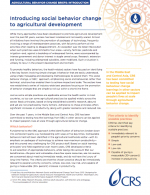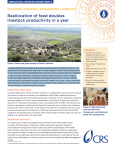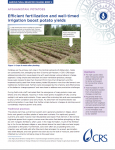Learning Briefs | October 17, 2019
Introducing social behavior change to agricultural development
While many approaches have been developed to promote agricultural development over the past 50 years, success has been localized and not readily scaled. Almost all initiatives have involved the promotion of packages of technology, frequently involving a range of interdependent practices, with failure to perform all the activities often leading to disappointment. An exception was the Green Revolution when such practices were limited to four areas—variety, fertilizer, pesticide and irrigation—and, against a backdrop of widespread famine, were accompanied by intense government and donor interest in staple cereal crops. Research, extension and funding, including widespread subsidies, were mobilized. Such a situation is unlikely to recur in the present development environment.
AGRICULTURAL BEHAVIOR CHANGE: BRIEF 1
AGRICULTURAL BEHAVIOR CHANGE: BRIEF 2
AGRICULTURAL BEHAVIOR CHANGE: BRIEF 3
AGRICULTURAL BEHAVIOR CHANGE: BRIEF 4
AGRICULTURAL BEHAVIOR CHANGE: BRIEF 5





